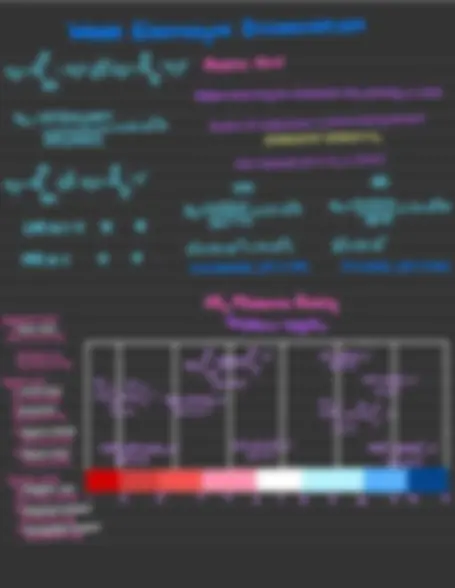




Study with the several resources on Docsity

Earn points by helping other students or get them with a premium plan


Prepare for your exams
Study with the several resources on Docsity

Earn points to download
Earn points by helping other students or get them with a premium plan
Community
Ask the community for help and clear up your study doubts
Discover the best universities in your country according to Docsity users
Free resources
Download our free guides on studying techniques, anxiety management strategies, and thesis advice from Docsity tutors
A detailed overview of acid-base chemistry, focusing on the behavior of water, ph calculations, and buffer systems. It covers key concepts such as the dissociation of water, the role of hydronium ions, and the principles behind ph and poh. The document also explains the henderson-hasselbalch equation and its application in understanding buffer capacity, along with examples of biological buffer systems like phosphate, bicarbonate, and histidine. It is a valuable resource for students studying chemistry, biochemistry, or related fields, offering a comprehensive look at acid-base equilibria and their biological significance. (410 characters)
Typology: Study notes
1 / 4

This page cannot be seen from the preview
Don't miss anything!



Hyo, _ H
Proton (^) hop
1-11-1107 (^) H Dissociation of^ water^ is^ a^ rapid^ reversible^ process^ H,^ yy,#
"
H H The (^) equilibrium is^ strongly^ to^ the^ left^ 110W^ Kea)^ μ , 0-1-
μ / protons do^ not^ exist^ freely in^ solution 21-1,0 1- "
_
be determined experimentally , it^ is^ 1.8*10-1%1^ at^ 25°C^ Keg= [HHj ] [1-1,0] can^
electron pairs tonic (^) product Of^ water:^ Hydronium ions are solvated (^) by (^) nearby water molecules Kw= (^) keg
interchangeable
"
Kw=[H "
} [g☆aˢ'ⁿ9lY^ Cola (^) , vinegar
7 N☒7dral
pH and^ POH^ must^ always^
μ
In neutral^ """'^ "^ '^ """^ "
§,ggÑ% """"""°"
pH Scale^14 IMNAOH [H
-14 (^14) iM¥% THEE^ TREE^ THAT THE:P , 10 -^11 -13 13 ' ii. a (^) ion n^ €¥EE±€^ (÷É¥?-€¥¥EEÉ^ E€•?-€#E€E÷
μ,,^ , Hydrolodlc Perohloric Chloric
10
10
10
io-oc.MN#TFcqM.qTFF.IF MMF•^ 9M¥ ' °^ " a :} ii. s 105 " 10 €¥÷E€¥€÷E^ ☒E¥E¥¥¥:#^ €¥÷ET¥E¥^ ÷÷ÉE¥÷
Sulfurous (^) Methanol C (^) Phosphoric μ ,^ ,^ ,
" (^) " "
""""ˢ Acid
' (^) "
_' (^1) yielding one or more proteins^ per^ molecule
functions
Buffers -_ Mixtures (^) of Weak Acids and Their (^) Conjugate Base
7-
◦f^ "'d^ and^ ◦""°"^ f""^ "^ + " (^) "MP°"^ᵈ (^5) =
-^ "^ "^ "
P " 4 - Buffering ••Éa= .>^ , re (^) "" Buffering (^) capacity of^ acid^ /Anton^ system^ IS^3 _ ↓_pH 3.
2 ¥¥oH.com^ =
,, (^) p,^ g,,,,,^ g
Henderson -^ Hasselbatch^ Equation^ :^ O 5/0 (^) 100% Percent titrated HA (^) 1-i'+^ A-
Biological Buffer (^) Systems
↓ (^) Enzyme - catalyzed reactions have^ optimal pH
and dissolved^ Hcoj depends^ on^ pH ↓ ↓ (^) Buffer (^) systems in (^) vivo are (^) mainly based on pH =pKa-110g [^ phosphate^ ,^ concentration in^ mini^ molar^ range [HA]^ bicarbonate^ ,^ important^ for^ blood (^) plasma histidine (^) , efficient buffer^ at^ neutral^ pH Buffer (^) Systems in^ vitro^ are^ often^ based^ on^ sulfonic
HEPES
CHES
,